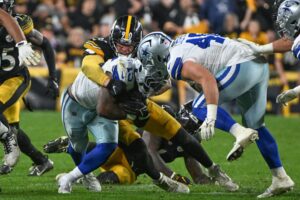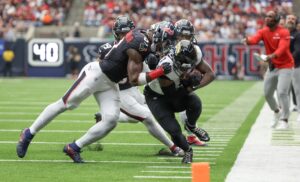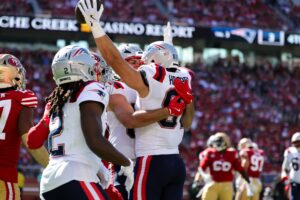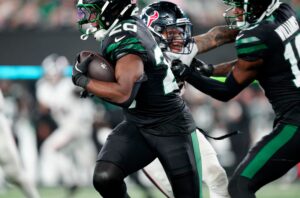A depressing quarterback battle on one side; one of the best defenses in the NFL on the other. The Denver Broncos represent the ultimate dichotomy of excellence and problems. So how does that fit into their scheme? As we make our way to the finish line in the AFC’s portion of our newest series, we take a look at what the Denver Broncos schematic philosophy is on both sides of the ball.
The Breakdown: A Look at the Denver Broncos Schematic Philosophy
The Mike McCoy Offense
Vance Joseph is the Broncos new head coach, and he tabbed former San Diego Chargers head coach Mike McCoy as his offensive coordinator. During his time with the Chargers, McCoy’s passing game was centered around three-step timing concepts with tight end isolation routes, while multiple two-man route concepts on the backside will also feature a tight end and a running back coming out of the backfield. Expect newly-acquired running backs Jamaal Charles and Stevan Ridley to shine in that aspect on third downs.
The quarterback debacle is both the offense’s handicap and the franchise’s most noteworthy headline entering the season. Current starter Trevor Siemian posted underwhelming numbers, both at the position’s basic metrics and the advanced ones.But former head coach Gary Kubiak built the passing game on deep dropbacks that forced Siemian to rely on the arm talent and cerebral prowess he does not have.
Second-year quarterback Paxton Lynch isn’t progressing at the rate the franchise anticipated either, so whoever wins the starting battle should expect to receive aid by way of boots, play-action and specific coverage beaters.
While Kubiak built both his ground game and play-action series on outside zone, expect McCoy to incorporate more power and counter runs while maintaining those outsize zone runs that attack the perimeter. The addition of Charles and 2017 first round pick, left tackle Garett Bolles, should serve to aid the perimeter ground game and allow the former to provide incumbent running back C.J. Anderson with a threatening one-two punch. Denver is also one of the few NFL teams that keeps a fullback on the roster, so expect Andy Janovich to play a pivotal role in clearing space on those aforementioned gap scheme runs.
Adaptability on Defense
Former defensive coordinator Wade Phillips‘ 3-4 is here to stay under current defensive coordinator Joe Woods. However, Joseph has the experience coaching under a base 4-3 system, hence signaling his ability to adapt his defense if need be.
Having the talented safeties the Broncos do is beneficial to a defense, expanding on the upon the realm of possibilities. Denver’s creativity will put these safeties in man coverage duties, force them to rely on heavy coverage rotations, and run a number of blitz packages through them. Occasionally, the defense will also allow the safeties to play in dime packages on passing downs. When your defense has that type of talent on the back-end, it becomes increasingly difficult for the opposing quarterback to recognize the shifting coverage and make checks at the line to efficiently account for the blitz.
That talent in the secondary can similarly be found in one of the NFL’s most dominant group of corners consisting of Aqib Talib, Chris Harris and Bradley Roby. When you pair this collective group of talented defensive backs with an elite pass rusher (Von Miller) and two that continue to get better (Shane Ray and Derek Wolfe), the need to blitz drops at an exponential rate. Observe how efficient the Broncos can be at generating pressure without the use of the blitz. Without having to blitz further allows the defense to play straightforward coverage schemes that leave your unit less vulnerable to mishaps.
As we make our way to the conclusion, that headlined “adaptability” can cause offenses unimaginable headaches. It was not uncommon for the Broncos to send slot or second-level blitzes from the same alignments and fronts on the same series, both with different coverage rotations and coverage shells behind them. The trust the coaching staff had in the secondary became noticeable when they would leave their base front seven on the field against three-wide sets, creating a heavy box that discouraged teams from running the ball and dared them to throw into an elite plus-one for the defense. Factor in the occasional fifth or sixth pass rusher, and life for the offense often became miserable.
The Oakland Raiders are ultimately the division’s top dog, but with the Kansas City Chiefs potential quarterback conundrum and the Los Angeles Chargers lack of overall continuity, the battle for number two-and a potential Wild Card spot-are certainly up for grabs. If Denver can manage to better their 2016 quarterback production, they unquestionably have the firepower to make a run in the postseason.
Main Image:






